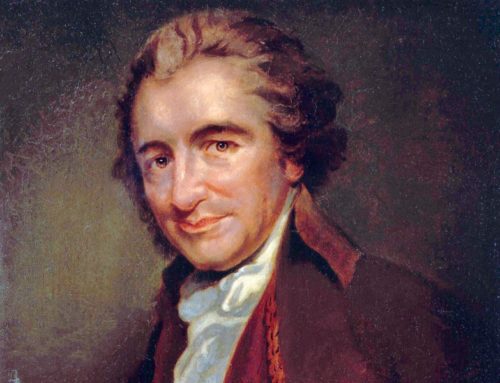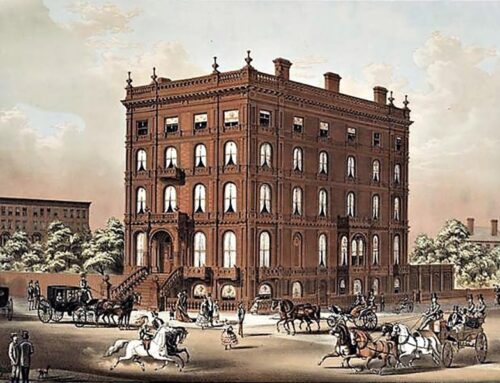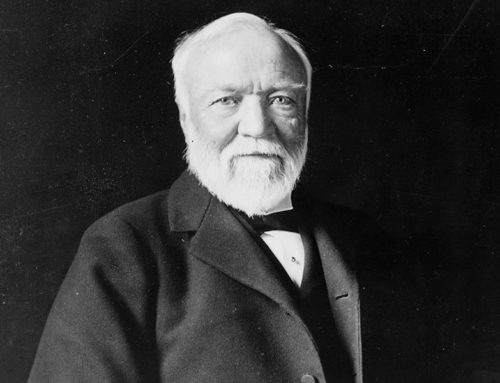

“The heavens declare the glory of God; and the firmament sheweth his handywork.” —Psalm 19:1
Johannes Kepler Is Born, December 27, 1571
![]() ohannes Kepler’s achievements in mathematical theory and scientific application astound even the casual observer. In Kepler’s day, princes subsidized geniuses and kept them close to the throne, for such men brought prestige to the state and reflected glory on the political leaders as men of Renaissance wisdom and intelligence. But the Reformation had divided Europe into religiously diverse states and woe betide the scientist whose faith identified him as holding doctrines opposite those of the prince. Kepler’s Lutheran, and then Calvinist, convictions in Catholic jurisdictions, during the Thirty Years War, made for a life beset with problems unrelated to astronomic calculations.
ohannes Kepler’s achievements in mathematical theory and scientific application astound even the casual observer. In Kepler’s day, princes subsidized geniuses and kept them close to the throne, for such men brought prestige to the state and reflected glory on the political leaders as men of Renaissance wisdom and intelligence. But the Reformation had divided Europe into religiously diverse states and woe betide the scientist whose faith identified him as holding doctrines opposite those of the prince. Kepler’s Lutheran, and then Calvinist, convictions in Catholic jurisdictions, during the Thirty Years War, made for a life beset with problems unrelated to astronomic calculations.
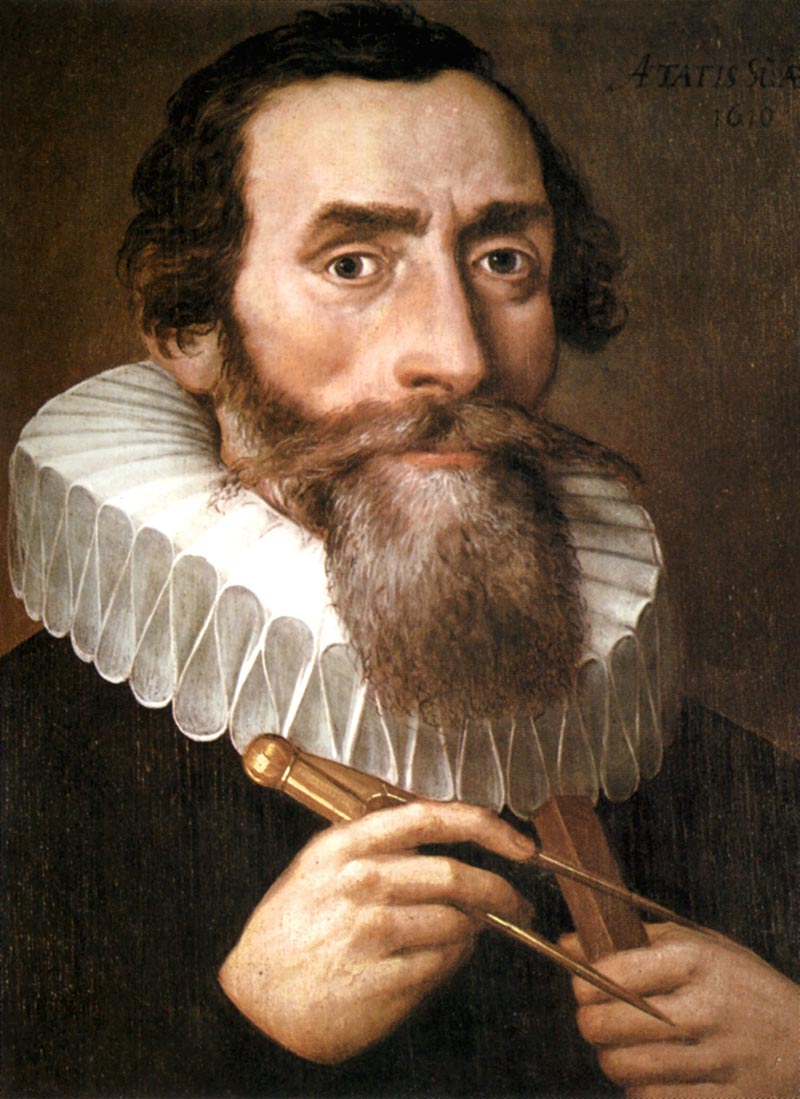
Johannes Kepler (1571-1630) German mathematician, astronomer and astrologer
Kepler was born in Weil der Stadt, a free imperial city in Swabia, a southwest German state in the Holy Roman Empire. The region had divided over the Reformation, between Protestant and Catholic. Kepler was raised by poor but devout Lutheran parents. His father was a mercenary and left when Johannes was only five years old. He likely died in the eighty-year war for Dutch independence. As a young boy, he contracted smallpox which left him with crippled hands and weak eyesight. His love of mathematics and interest in the heavens was encouraged by his mother and grandfather. Based on his superior work in local schools, Kepler was awarded a scholarship to Tubingen University to study for the Lutheran ministry, but that course was providentially altered.

Kepler’s birthplace in Weil der Stadt
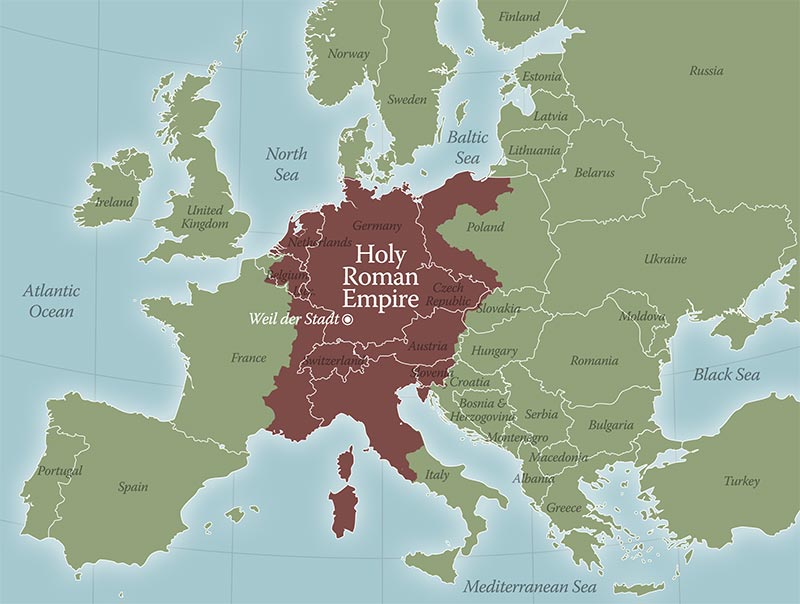
The Holy Roman Empire at its zenith overlaid on modern European national borders
While a college/seminary student, Kepler was introduced to the work of Nicolaus Copernicus who had written that planets orbit the sun rather than the Earth, a revolutionary break from Church dogma and astronomic belief. With his brilliant mathematical skills and astrological acumen, Kepler was invited to become, at the age of twenty-three, professor of mathematics at the Protestant seminary in Graz, Austria. In his spare time he studied astronomy and astrology (considered nearly the same discipline in that era). He took a public stand for the heliocentric Copernican theories in his first published work, in opposition to both Luther’s and the Catholic Church’s belief. So dangerous was his theory considered that he and his first wife, Barbara, wrote to one another in code to minimize the chance of persecution.
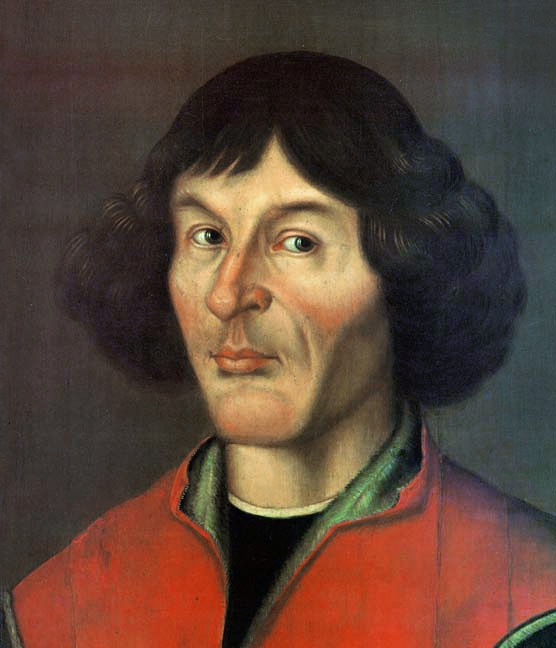
Nickolaus Copernicus (1473-1543), Polish mathematician and astronomer known for his heliocentric model of the universe
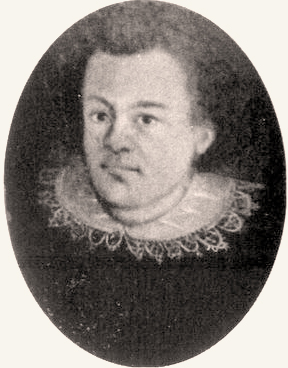
Johannes Kepler (1571-1630
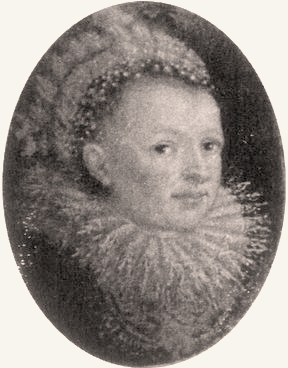
Barbara Kepler (née Müller) (1574-1611)
Kepler was skilled at ingratiating himself with men who could promote his career, and he received the benefits of several patrons. He also married an heiress, twice widowed, and together they had five children. Kepler corresponded with other prominent astronomers and ran afoul of Tycho Brahe, one of the foremost scientists of his day, a wealthy Danish nobleman-astronomer. They debated Copernican theory and eventually came together at Tycho’s new observatory near Prague, after Kepler fled Graz for refusing to convert to Roman Catholicism. Brahe added Kepler to his growing cadre of assistants, but was careful not to reveal to him all that he had discovered about planetary motion. Upon Tycho’s death that very year, Kepler was appointed Imperial Mathematician and given the task of completing Tycho’s work.
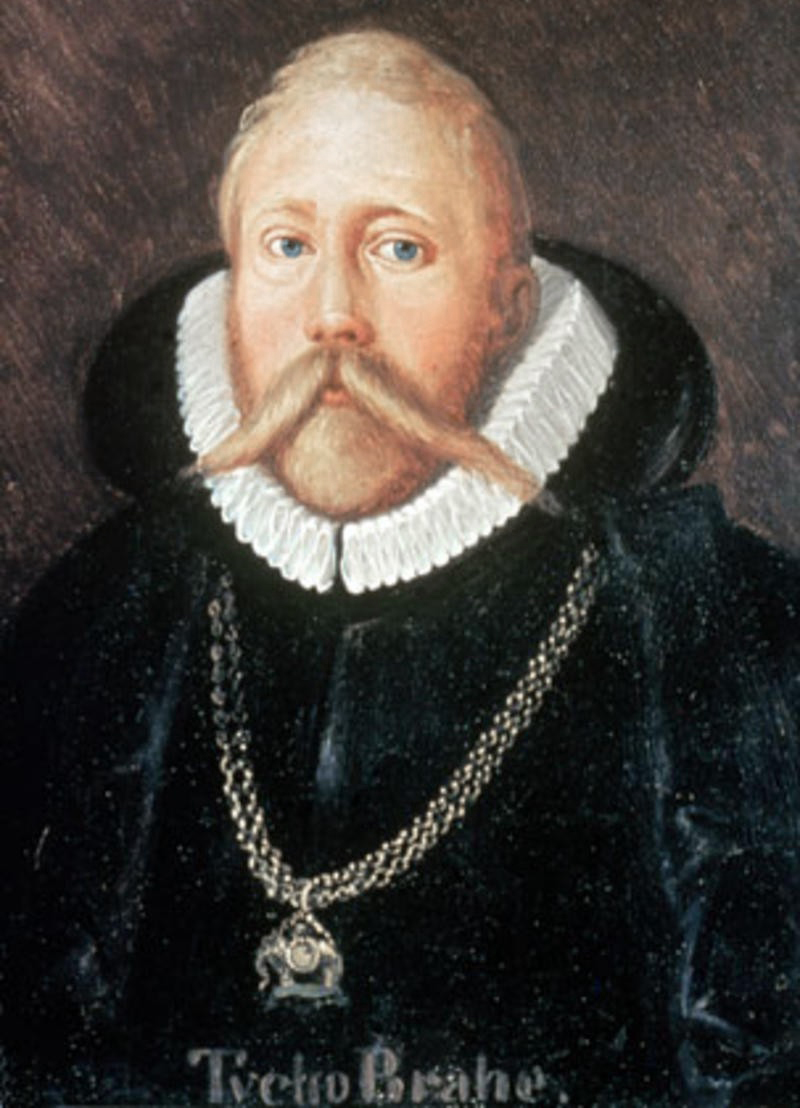
Tycho Brahe (1546-1601), Danish nobleman, astronomer, and writer known for his accurate and comprehensive astronomical and planetary observations
Over the following eleven years Kepler came into his own using Brahe’s notes and his own observations. Kepler was so respected that he was permitted his Lutheran convictions though the emperor’s court was Catholic. His duties included “reading the stars” and giving astrological advice to the Emperor, as he continued serious astronomical calculations and collegial contact with the other mathematicians of Europe. It took him eight years to solve the problem of explaining the unusual Mars orbit. He discovered the planets travelled in ellipses rather than circles, now known as Kepler’s First Law. He figured out that planets further from the sun moved more slowly, Kepler’s second law (1609). In comparing the orbits of two planets he found that “The square of the ratio of the period of two planets is equal to the cube of the ratio of their radius” (Third Law, 1619).
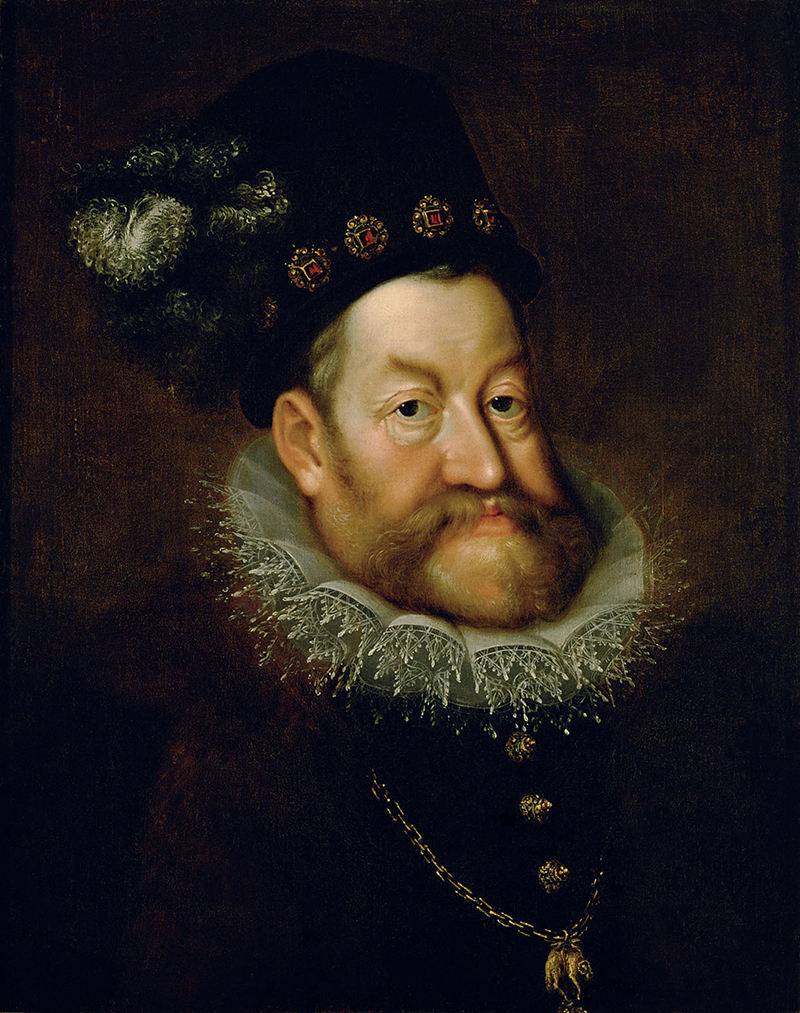
Emperor Rudolf II of the Holy Roman Empire (1552-1612)

Kepler’ First Law of Planetary Motion states that the orbits of planetary bodies are ellipses with the sun at one of the two foci of the ellipse (exaggerated for illustration purposes)
He wrote many other works, some of which still hold up. Kepler’s contributions to astronomy accorded him the title of “Father of Astronomy” by historians. Tubingen would not let him return because his Calvinist beliefs conflicted with strict Lutheranism and eventually he had to move to Linz. During the Thirty Years War, Linz was laid siege to by Catholic armies and he had to move again. Ironically, Kepler became an advisor to the Catholic General Wallenstein but failed to predict Wallenstein’s assassination. Kepler’s gravesite was lost when the Swedish army destroyed Regensburg, where he had died in 1630. It was this great Christian astronomer who is said to have remarked that “I think God’s thoughts after him,” a central tenet of twentieth century Reformed presuppositional apologetics.
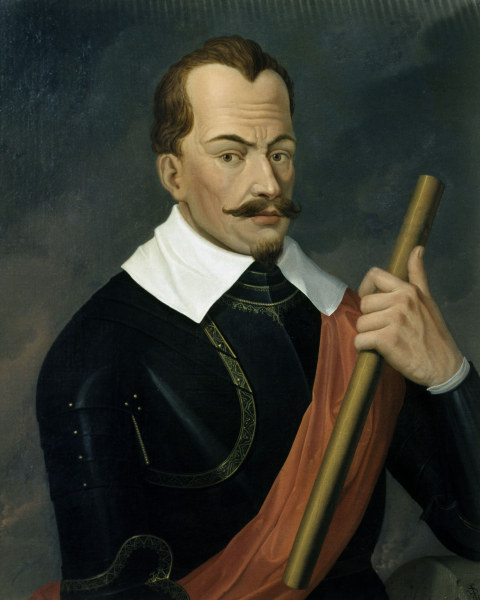
Albrecth von Wallenstein (1583-1634)
Image Credits: 1 Johannes Kepler (Wikipedia.org) 2 Holy Roman Empire map (Wikipedia.org) 3 Kepler birth home (Wikipedia.org) 4 Nicolaus Copernicus (Wikipedia.org) 5 Johannes and Barbara Kepler (Wikipedia.org) 6 Tycho Brahe (Wikipedia.org) 7 Emperor Rudolf II (Wikipedia.org) 8 Albrecht von Wallenstein (Wikipedia.org)



